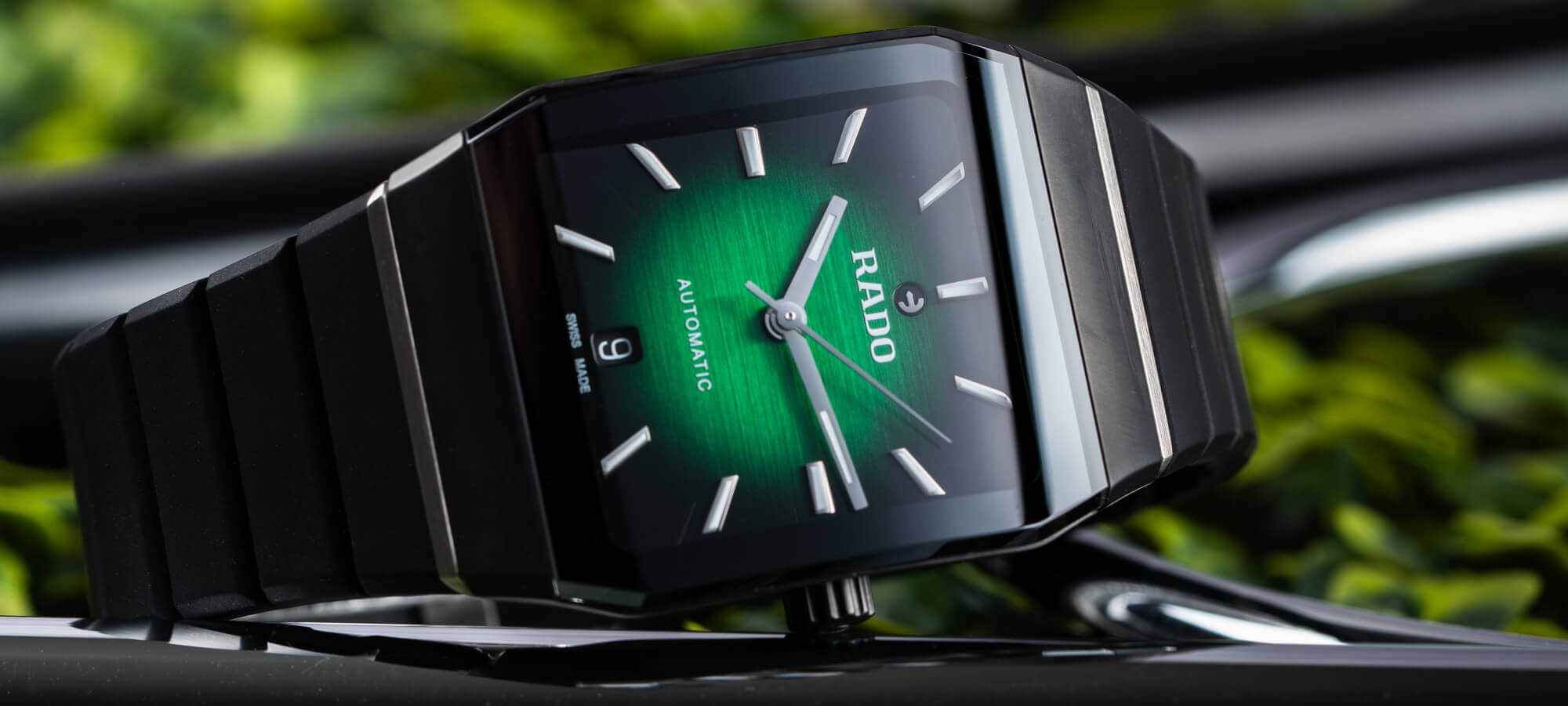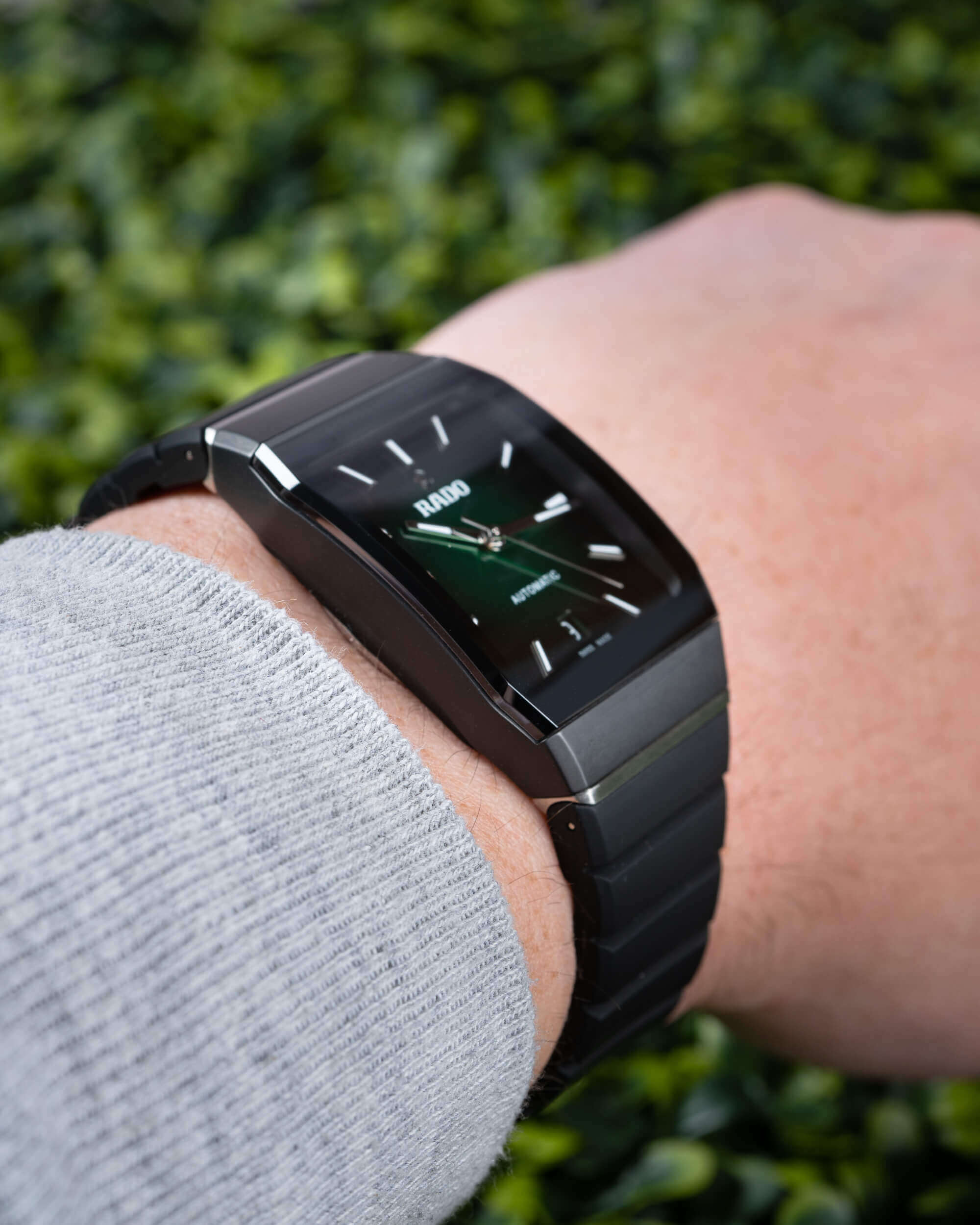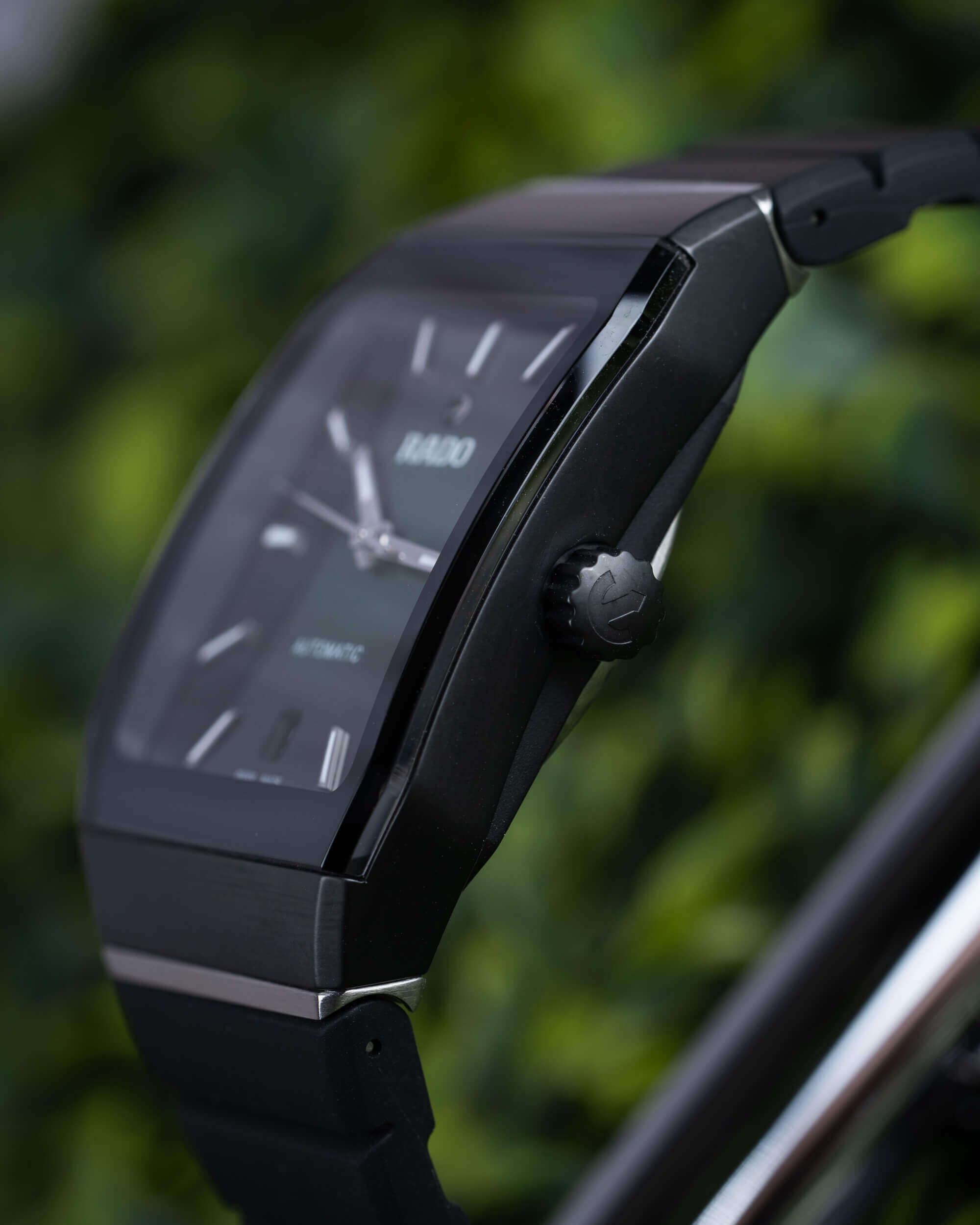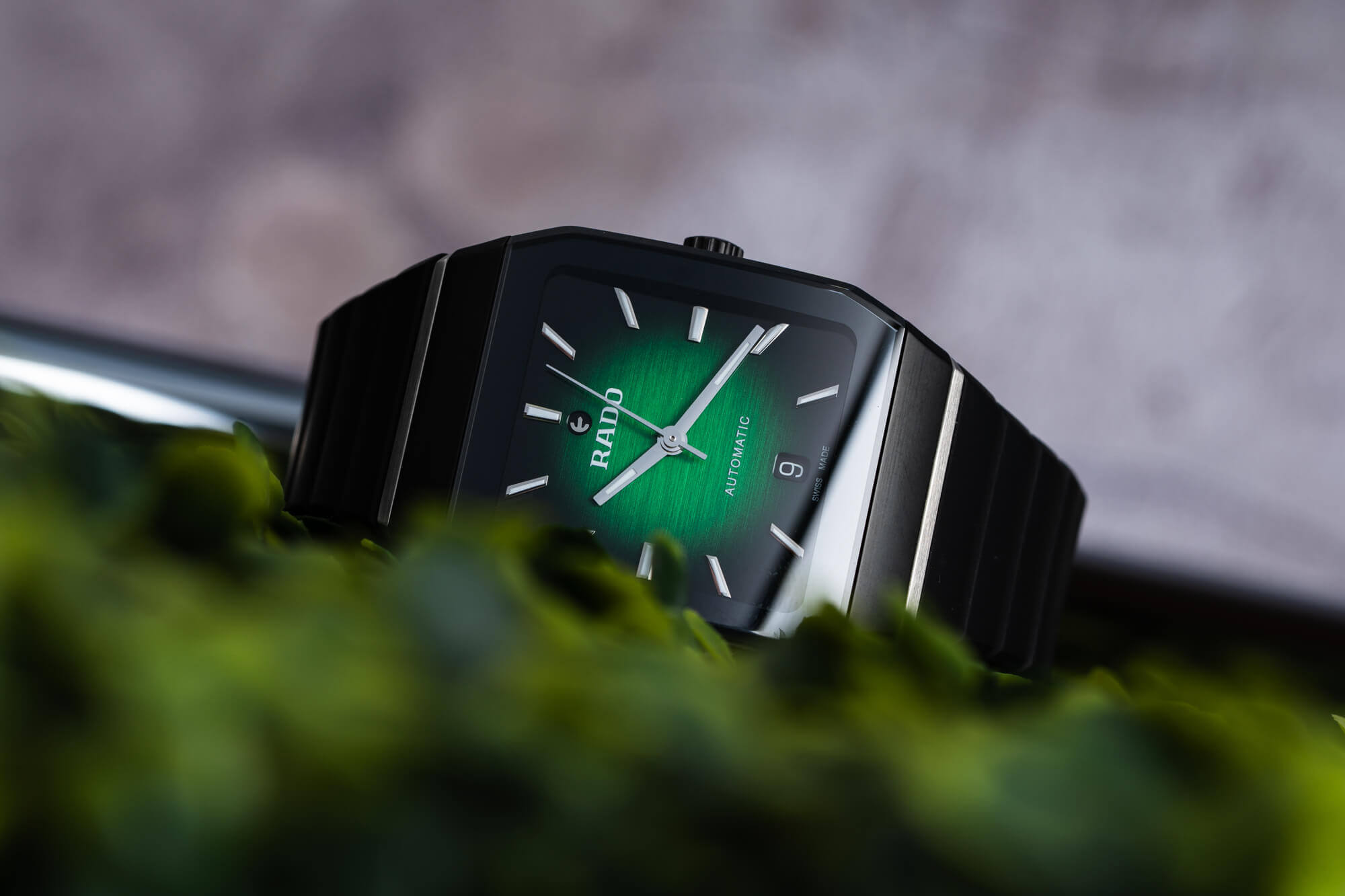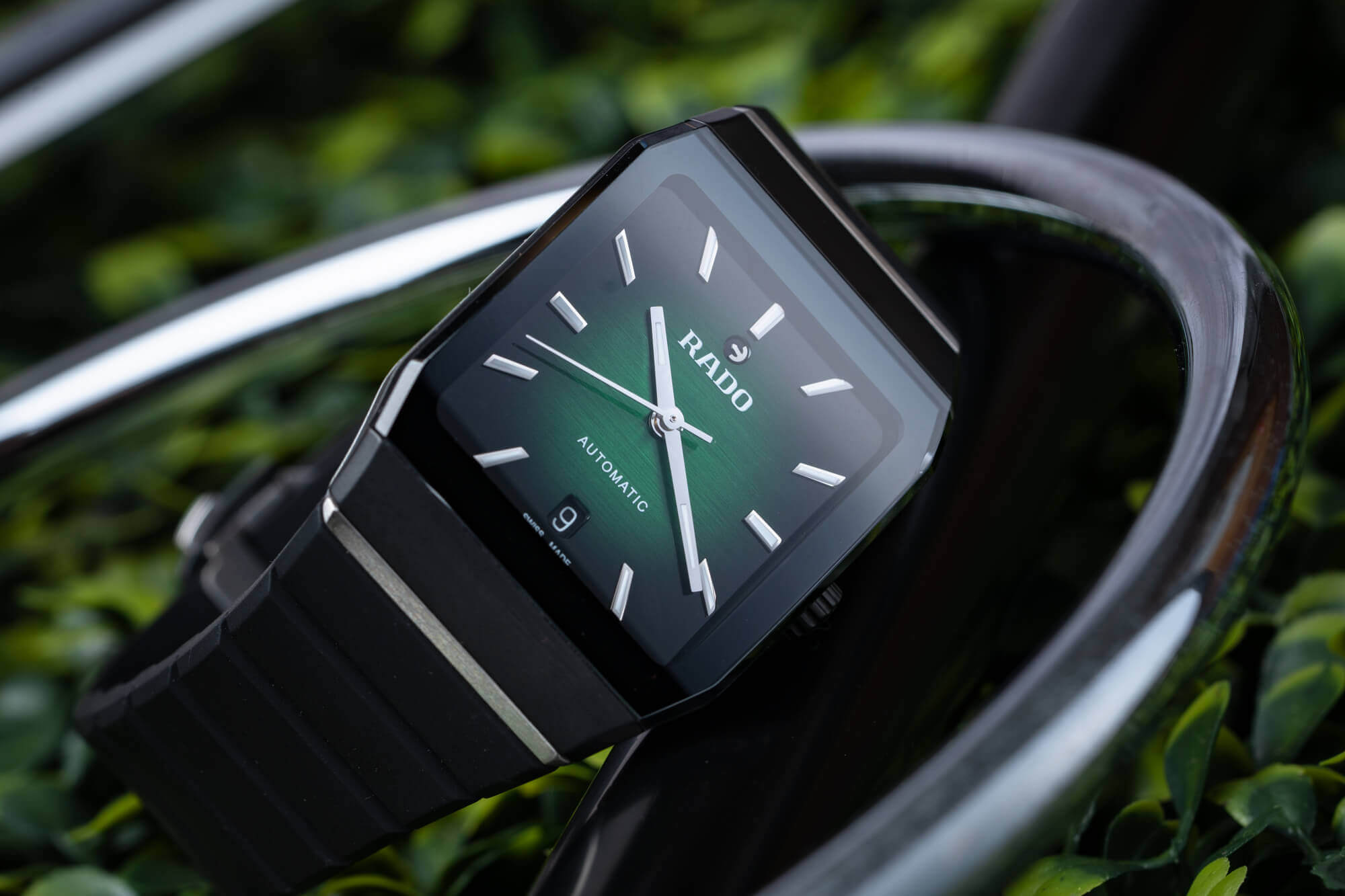
I shouldn’t have been surprised by Rado announcing a retro-futuristic watch. Fun, funky, and forward-looking is the brand’s bread and butter. Sure, Rado pushes hard with its Captain Cook collection, but what other serious Swiss brand drops things like updated Diastars and the True Square? Certainly, under the Swatch umbrella where Rado finds itself, it seems to be positioned to do two things very well: push the use of cutting-edge materials (namely ceramic) and deliver more outré designs than the group’s other brands. The Rado Anatom delivers on both of its main goals and is inspired by a vintage 1983 quartz model of the same name and celebrates that watch’s 40th anniversary.
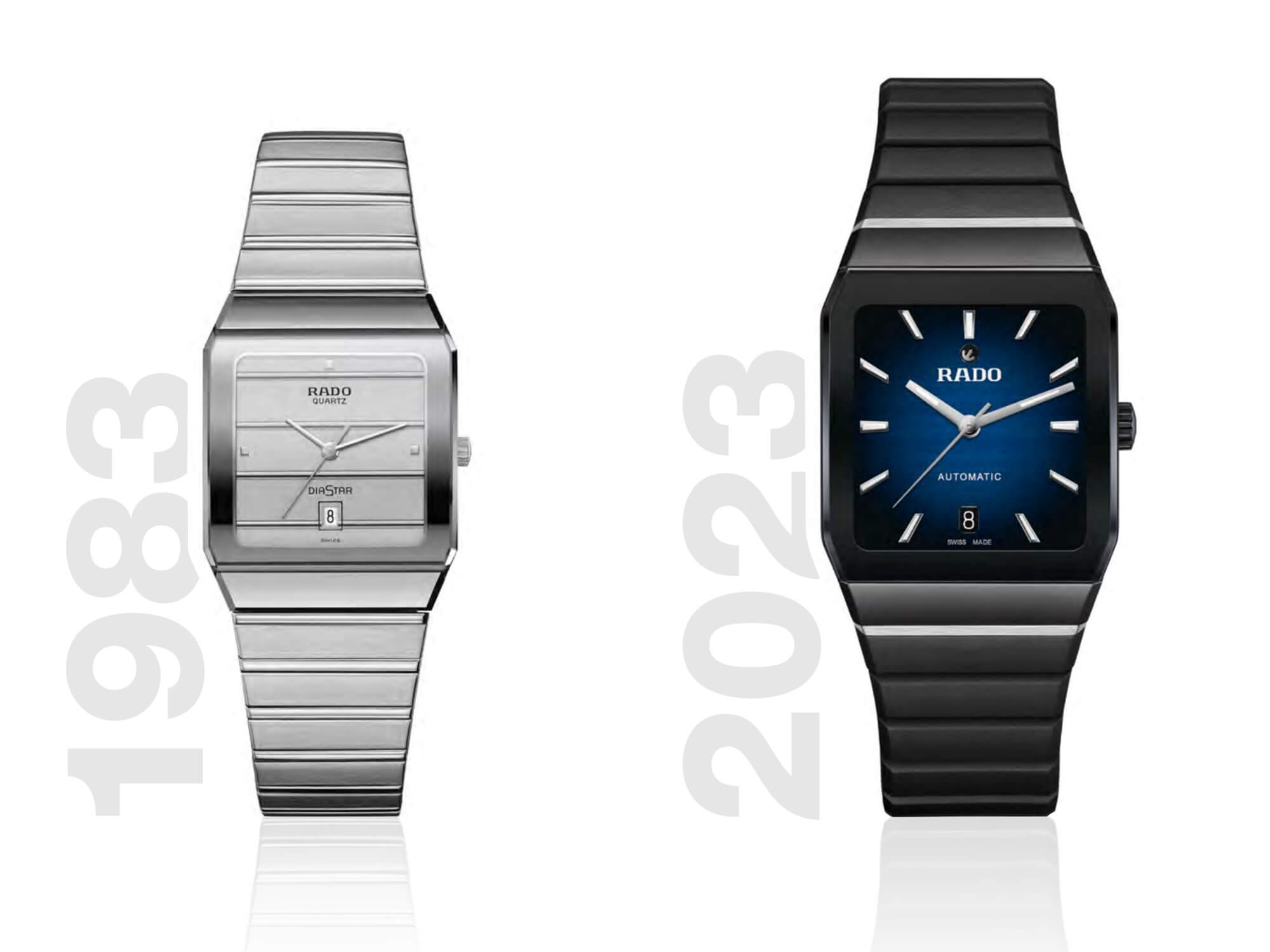
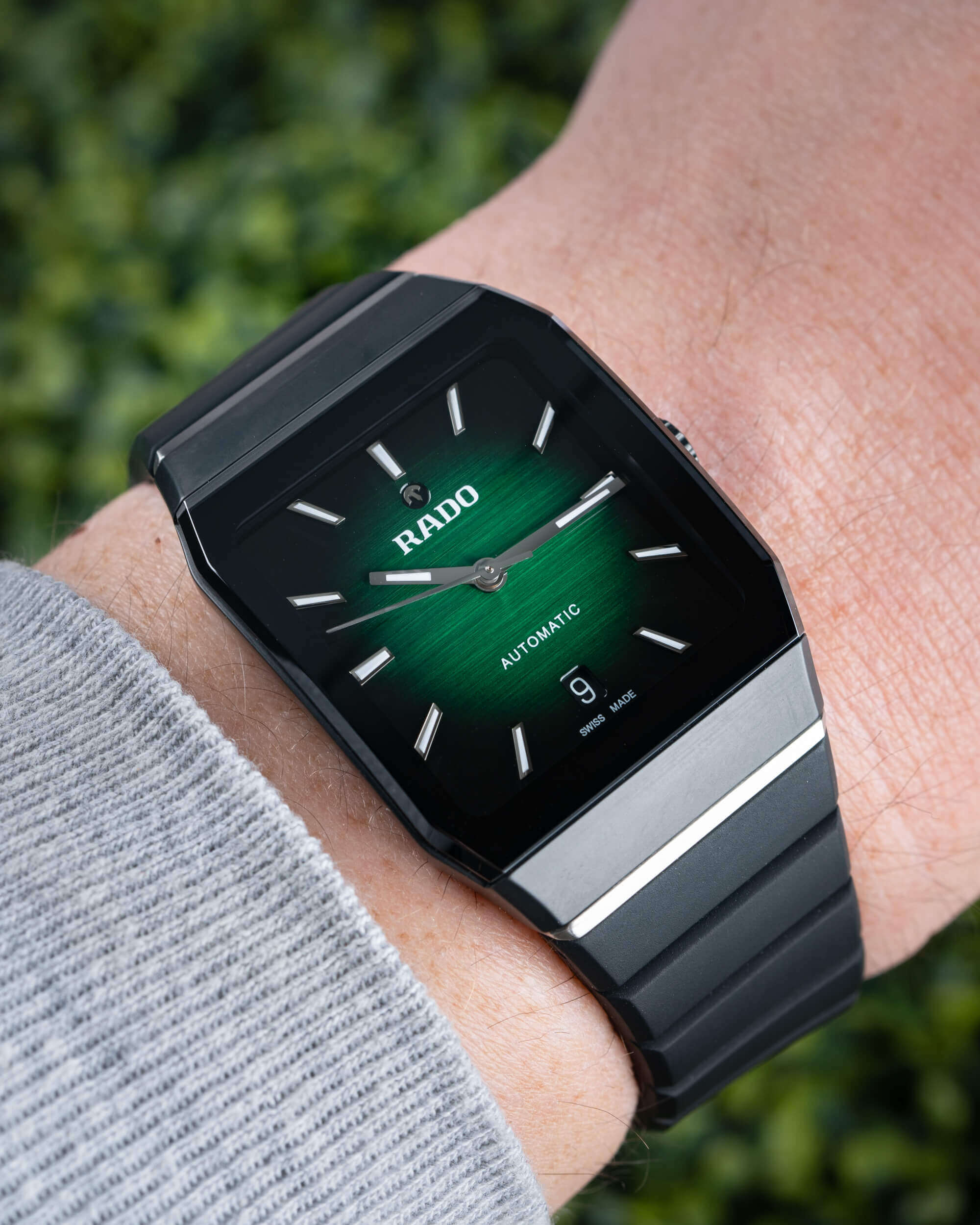
When you’re thinking about how the Rado Anatom sits on the wrist, it’s best not to think of it as a typical watch but instead as a cuff or a bangle. Maybe you don’t have much experience with such wrist adornments, but certainly, the Anatom isn’t the only watch that acts more like a single piece all the way around the wrist. Think of the much larger Gorilla Fastback or the Richard Mille RM 35-03: tonneau-shaped cases with integrated straps that fully meet the case and continue its silhouette. The difference between the Anatom and those pieces is that the Anatom has no bulk to it. Through and through, this watch is about minimalism, staying true to the era in which the original was born. All of this is to say that it wraps around the wrist beautifully.
The watch itself measures 32.5mm wide and 44mm lug-to-lug (as I measured it), but that lug-to-lug is deceiving. The actual bar connecting the band to the watch is farther out, but the beginning of the curve down and around the wrist is closer in. I’d say it wears closer to 46mm lug-to-lug (and the brand reports 46.3mm, but I don’t know where it measured), but I’d also say the lug-to-lug is irrelevant due to the flow from case to strap and around the wrist. The 11.4mm thickness shouldn’t cause issues for anyone. The case is presented in three main parts. Working from the outside in, there is a thin band at each lug that is made of brushed steel, then the main case that is made from matte black high-tech ceramic. The curved sapphire is metalized in black, which gives it that edge-to-edge appearance. The pull-out crown is made of the same matte-black ceramic, and the watch gets 50m of water resistance, which is perfectly acceptable given its style.
For the strap, you can see that it’s rubber with cutouts to give the appearance of “links.” But that’s not what I want to point out. The foldover clasp has an ingenious mechanism. While there’s no micro-adjustment built in, the clasp extends when unfastened to allow the watch to more easily slide over your hand and onto the wrist. This may sound unnecessary, but as someone with wide hands (my mom says I got my Kansas-born father’s “farming hands”), I can assure you that sliding a deployant clasp strap over my hand is a chore, and I truly appreciated the assist from the Anatom’s clasp.
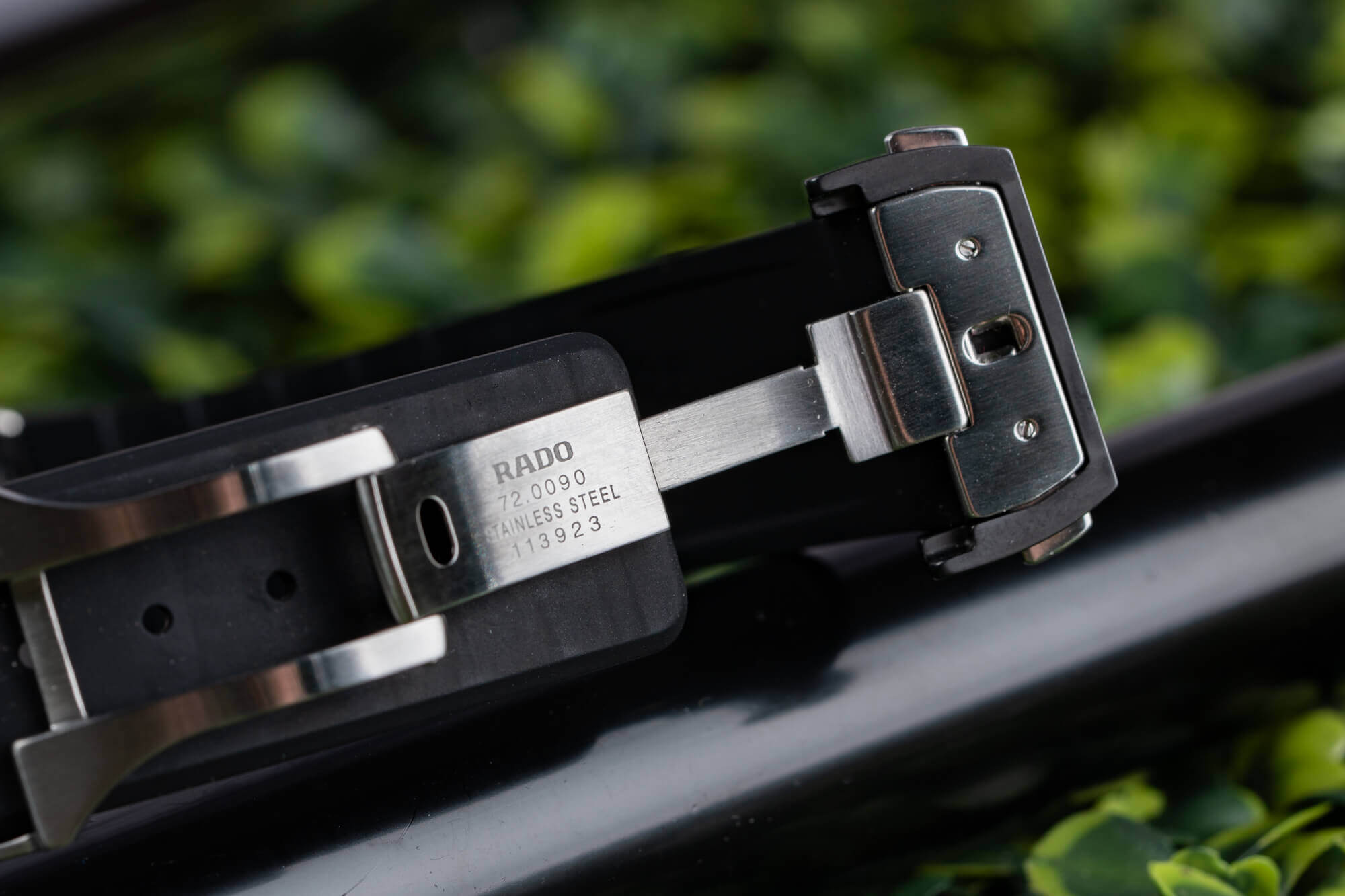
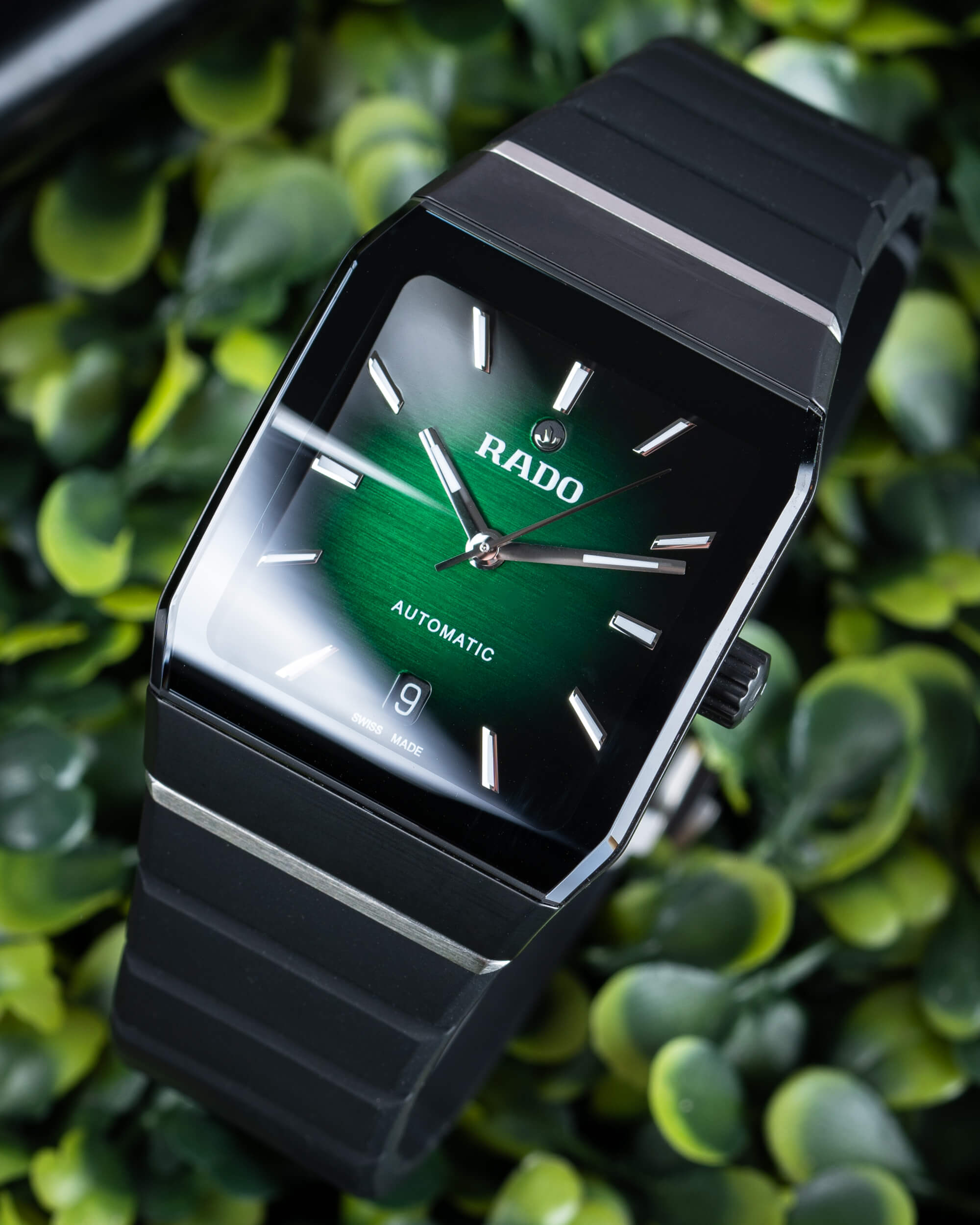
The Rado Anatom is available in four versions. A limited edition of 40 get baguette-cut diamond hour markers, a solid black dial with “jubilé” printed in silver, and a price tag three times higher than the three standard editions. Those editions are available in blue, green, and orange (the brand calls it “cognac”) gradients. I enjoyed the green, but I think they’re all quite splendid. The gradient is dramatic, always present and going from a rich, horizontally brushed green to inky black at the periphery. The indices show a great attention to detail: The outer edges all sit flush with the edge of the dial, reasserting the rectangular shape. The hands and indices are all rhodium plated and get Super-LumiNova, though it doesn’t shine as brightly as I’d prefer. With gradient dials, date windows are always a challenge; I’ve never seen a gradient date wheel. Typically, the best option is to go with the outer color, which is more often than not black. That’s what Rado has done, and I think it works well enough. As an added observation, I do like the soft corners of the date window. And yes, the anchor at 12 o’clock spins.
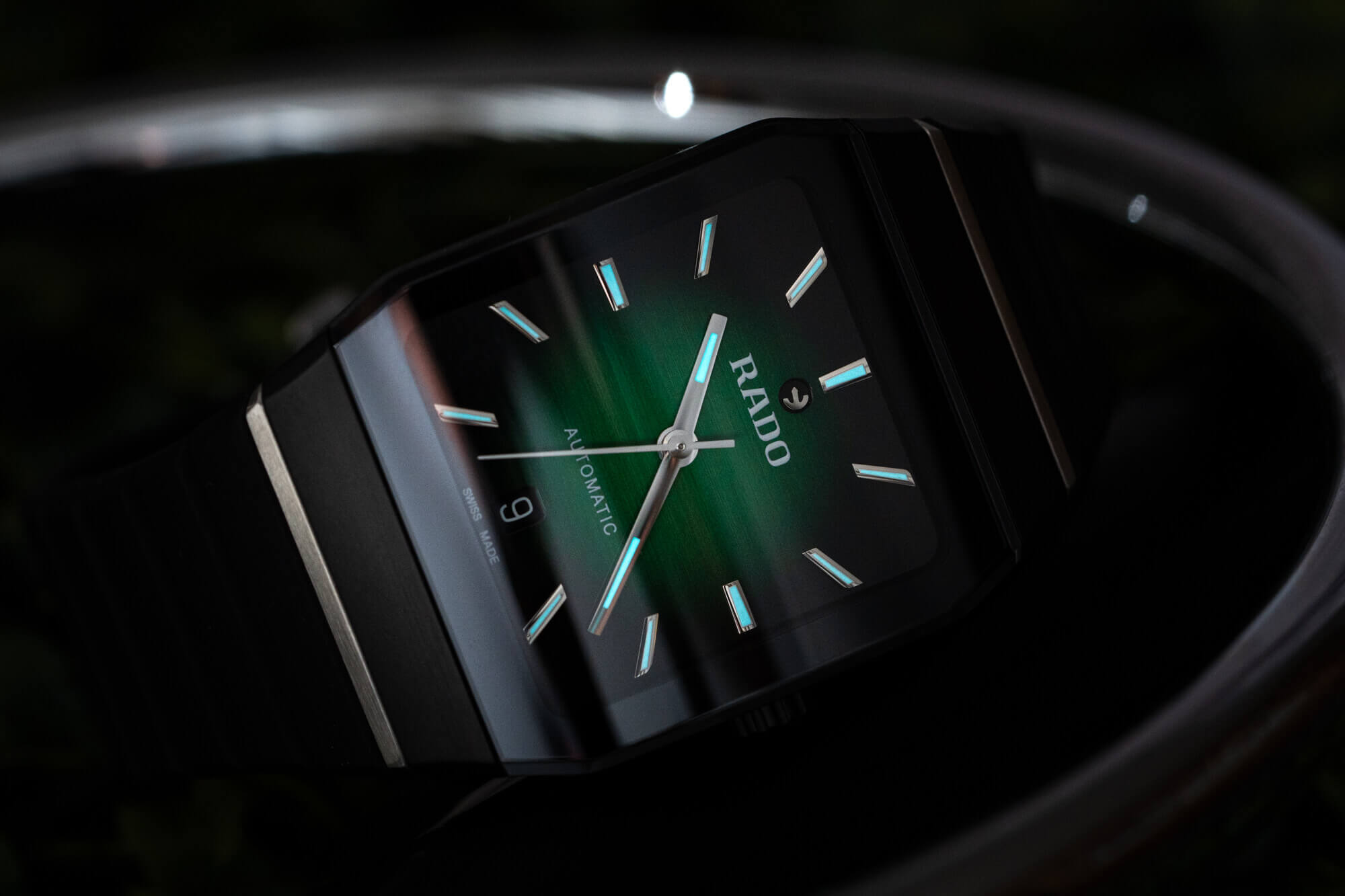
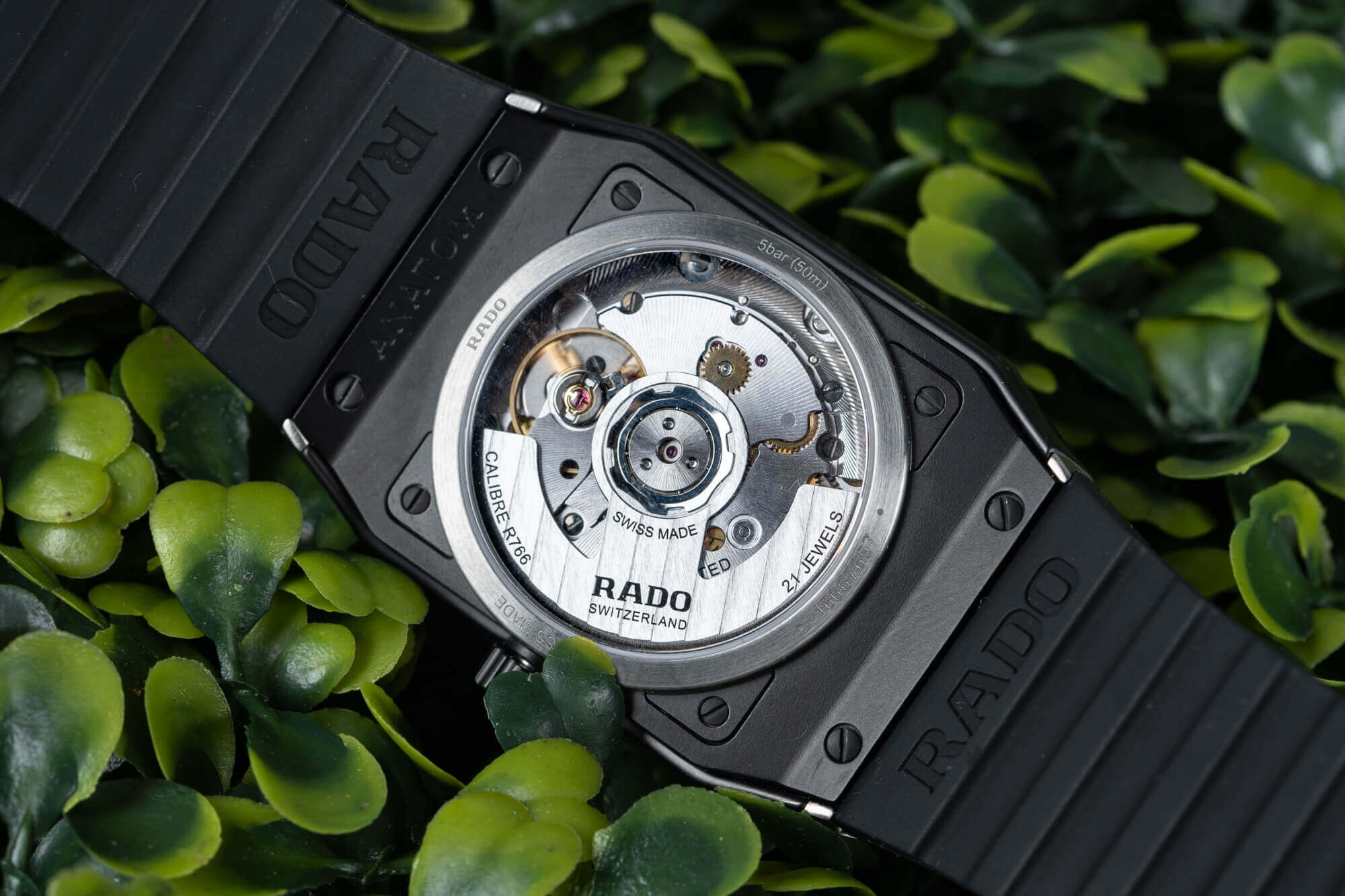
The caseback features a black sandblasted PVD stainless steel container with a steel ring, plus a sapphire crystal to show off the automatic Rado Caliber R766. This caliber appears to be at least exclusive to Swatch-owned Rado and is based on the ETA 2892. It’s got 21 jewels and runs at 28,800 vph, but it gets an upgrade. Instead of the typical 42-hour power reserve of the 2892, the R766 delivers 72 hours and has an anti-magnetic Nivacrhon hairspring. Rado has named this as its own movement, but nowhere does the brand actually go so far as to call it in-house or even manufacture, and that’s appreciated in a time of misleading marketing. For both the extended power reserve and the thinness that the caliber affords, I was more than satisfied.
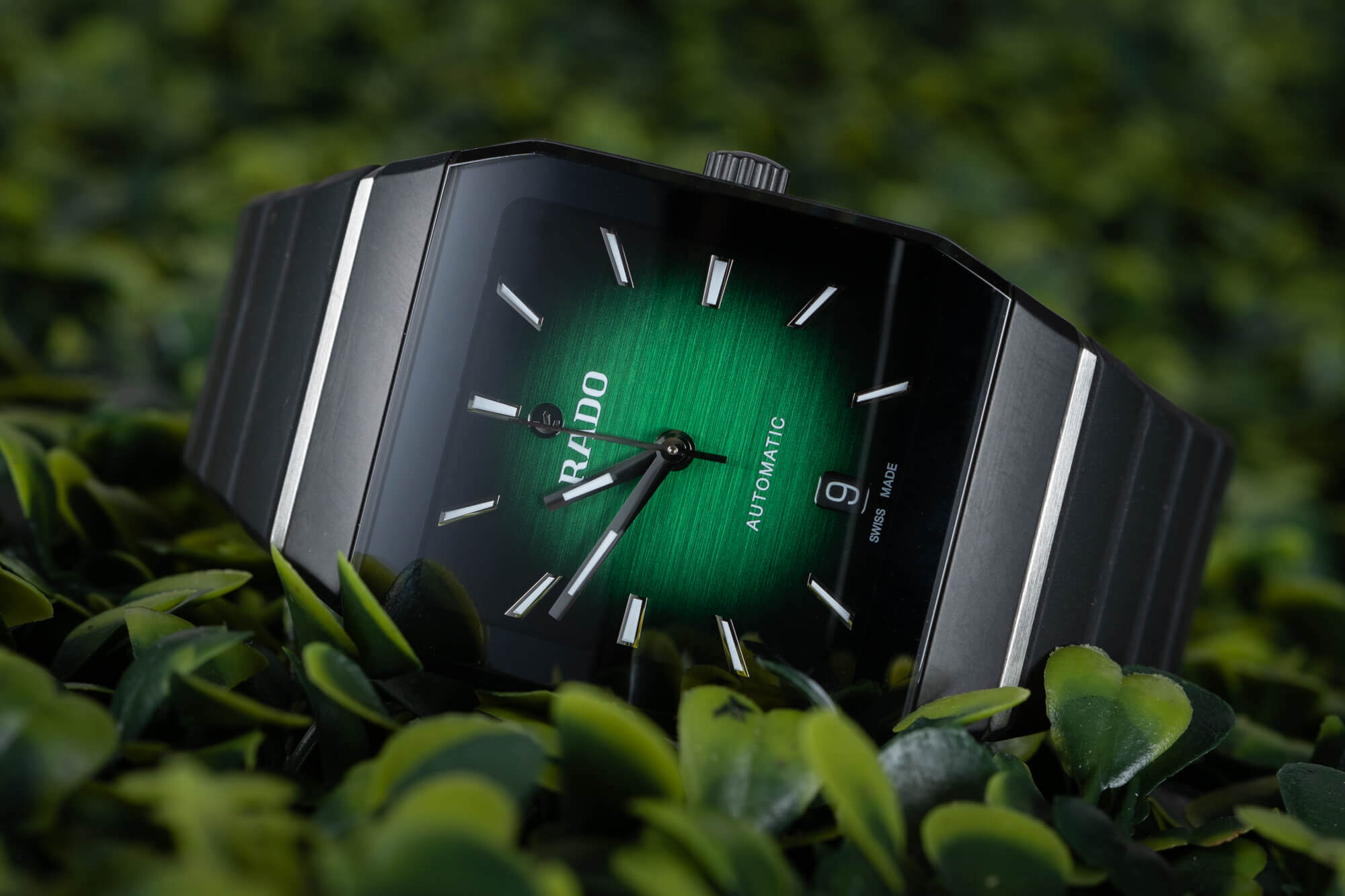
The Rado Anatom isn’t cheap, but it’s not prohibitively expensive. For an all-black ceramic watch that wears this well and has a captivating dial and impressive movement, there’s big value here. Rado has a deep catalog from which it can choose reissues, and while this is more of a reinterpretation, it still hits on the continuing trend, and does so beautifully. The Rado Anatom is priced at $3,350 USD. For more information, please visit the brand’s website.

